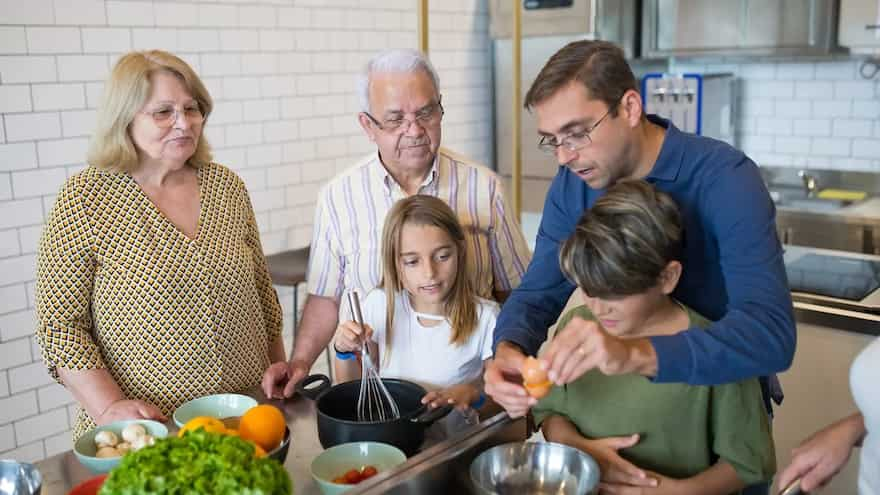Indian cuisine is known for its diverse flavors, aromatic spices, and vibrant colors. However, behind every delicious dish is a combination of science and art. Indian culinary schools teach students the skills and techniques necessary to master the delicate balance of flavors, aromas, and presentation. These schools are not just about cooking but also about understanding the science behind food and how ingredients interact to create unique, flavorful dishes.
One of the key aspects of Indian culinary education is understanding the use of spices. In India, spices are not just added for flavor but also for their therapeutic and medicinal properties. Culinary students learn how and when to use different spices and seasonings to achieve the perfect balance of flavors in each dish. They also learn the art of creating masalas and spice blends, which are the backbones of several cuisines, Indian and otherwise.
Indian culinary schools also place a strong emphasis on the use of fresh ingredients. Students learn about the different varieties of fruits, vegetables, and meats available on the market and how to select the best produce for their dishes. They are also taught about food handling and safety; it is critical to properly store perishable goods in order to capitalize on their natural flavors while cooking.
Another important aspect of Indian culinary education is presentation. Students learn how to plate their dishes to make them visually appealing, with an emphasis on color and texture. They are taught to arrange food on the plate in an aesthetically pleasing manner and the proper usage of garnishes and sauces to enhance the visual appeal of their dishes.
Indian culinary schools also place a strong emphasis on the cultural and historical significance of food. Students learn about the various regional cuisines of India and the world, the history and traditions behind each dish, and how to incorporate these elements into their own cooking. They also learn about catering, and the art of cooking for the masses.

Teaching how to cook, Image Source: Pexels
Culinary schools in India also teach students about the art of food and wine pairing. They instruct students on how to pair different wines with different dishes, taking into account the flavors, textures, and aromas of both the food and the wine. Students learn about the various wine regions of the world and the styles and flavors of the wines produced there.
One of the most important principles taught in culinary schools is the use of salt, fat, acid, and heat. Students learn how to balance these four elements in their cooking to create the perfect flavor and texture. They learn how to use salt to enhance the flavor of food, fat to add richness and moisture, acid to balance flavors, and heat to cook and transform ingredients.
The principles of molecular gastronomy and contemporary cuisine are also tantamount to a complete culinary education. Students learn about the science behind cooking and the usage of modern techniques and tools, such as sous-vide, foams, and gels, to create unique and innovative dishes. They also learn about the latest trends and styles in contemporary cuisine and how to incorporate these into their own cooking.
Finally, culinary schools in India teach students how to work in a commercial kitchen. They instruct students on kitchen safety and hygiene, the use of professional kitchen equipment, and how to work efficiently and effectively as part of a team. They also teach students how to manage food costs, plan menus, and create dishes that are both delicious and visually appealing. With these skills, students are well-prepared to work in the best professional kitchens in India and the world over.
Interdepartmental coordination is a crucial aspect of working in a commercial kitchen. Students are taught about the various departments within a kitchen, such as pastry, garde manger, and saucier, and how each department works together to create a seamless dining experience for customers.
Students learn about the importance of communication and collaboration between departments and how to coordinate their work with that of their colleagues. They also learn about the different roles and responsibilities of each department, including how they work together to plan menus, prepare ingredients, and serve dishes.
In addition, culinary schools teach students about kitchen hierarchy and working with their superiors, including head chefs, sous chefs, and other kitchen managers. They instruct students on how to take and give directions, work under pressure, and handle challenging situations in a professional manner.
The emphasis on interdepartmental coordination in culinary schools in India helps prepare students for the realities of working in a commercial kitchen. By learning about the importance of communication, collaboration, and coordination, students are better equipped to succeed in their careers and contribute to the success of the kitchen in which they work.
Students in Indian culinary programs learn not only the basics of cooking but also the history, culture, and technique behind Indian cuisine. They are provided with a comprehensive education in the use of spices, fresh ingredients, presentation, and cultural significance to help them become well-rounded and knowledgeable chefs. Whether students aspire to be professional chefs or simply want to learn the techniques of haute cuisine, these schools offer an education that is both practical and inspiring.


